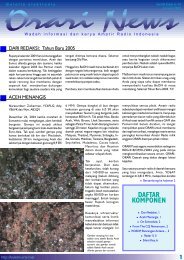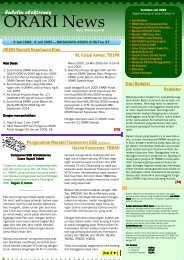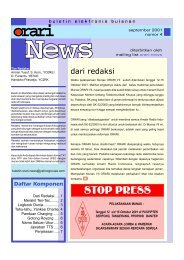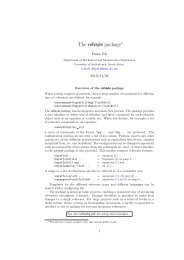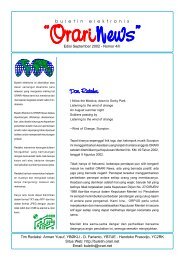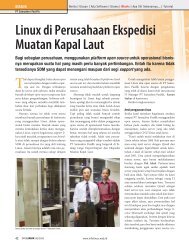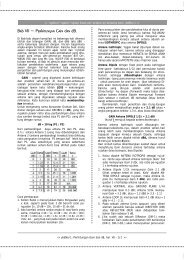You also want an ePaper? Increase the reach of your titles
YUMPU automatically turns print PDFs into web optimized ePapers that Google loves.
Figure 42: Placement of parasitic suppressors to eliminate VHF<br />
parasitic oscillations in HF r-f amplifiers.<br />
72<br />
loads the VHF circuit but is shunted by the coil for the<br />
lower fundamental frequency. In the process of adjusting<br />
the resistor-coil combination, it is often found that the<br />
resistor runs too hot. The heat is usually caused by the<br />
dissipation of fundamental power in the resistor. This is<br />
an indication of too many turns in the suppressor coil. Just<br />
enough turns should be used to suppress the parasitic<br />
and no more. Once the parasitic has been suppressed<br />
there will be no parasitic voltage or current present.<br />
Therefore, there is no parasitic power to be dissipated.<br />
(b) By the use of small parasitic chokes in the anode lead<br />
(see Figure 42). The size of this coil will vary considerably<br />
depending upon the tube and the circuit layout, and may run<br />
from about four to ten turns of about a one-half inch diameter.<br />
The presence of this choke in the frequency determining<br />
part of the circuit lowers the frequency of a possible VHF<br />
parasitic so that it falls near the self-neutralizing frequency<br />
of the tube and by-pass leads. In addition to varying the size<br />
of the suppressor choke, the amount of inductance common<br />
to the screen and filament in the filament grounding strap<br />
may be a factor. This can be varied simultaneously with the<br />
suppressor choke.<br />
Of the two methods indicated above for suppressing VHF parasitic<br />
oscillations, the first one is probably the simpler to use and has<br />
been widely employed.




